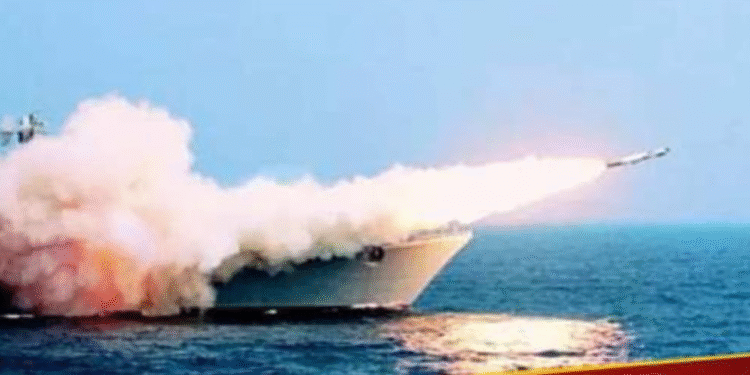Special Correspondent
New Delhi: In a decisive escalation following the Pahalgam terror attack, India has launched a powerful retaliatory strike that has left Pakistan’s largest port, Karachi, heavily damaged. According to top defence sources, India deployed its flagship aircraft carrier INS Vikrant and Kolkata-class guided-missile destroyers to carry out the precision attack on strategic naval facilities near the Karachi coast.
The Indian Navy fired a barrage of precision-guided missiles at Karachi port and nearby Pakistani naval installations, triggering massive explosions and fires. Satellite images reportedly show widespread damage across key infrastructure and dry docks. This strike marks one of the most audacious maritime operations in recent history, showcasing the Indian Navy’s blue-water capability and multi-domain coordination.
Targets and Impact
Pakistan’s key naval bases at Karachi and Ormara, which house command centers, warships, and submarines, were primary targets. Sources confirmed that Indian missiles successfully hit multiple high-value assets, including a Pakistani Navy submarine dock and a radar installation. INS Vikrant’s air wing played a pivotal role in neutralizing air defence systems ahead of the naval assault.
Operation Sindoor Expansion
This strike forms part of an expanded Operation Sindoor, India’s ongoing counter-terror campaign launched in retaliation to the April 22 Pahalgam attack, where 26 Hindu pilgrims were killed. The operation initially began with airstrikes on nine terror camps across Pakistan and PoK, targeting Lashkar-e-Taiba, Jaish-e-Mohammed, and Hizbul Mujahideen infrastructure. The naval strike is the latest and most strategic phase in the operation.
Pakistan’s Failed Retaliation
Following India’s airstrikes, Pakistan attempted a counteroffensive late Wednesday night using F-16 and JF-17 fighter jets, along with eight armed drones. However, the Indian Air Force’s preparedness, including S-400 air defence systems, resulted in the interception and destruction of two F-16s, two JF-17s, and all eight drones before they could inflict any damage.
Armed Forces on High Alert
India’s Army, Navy, and Air Force have now been fully mobilized under a tri-service command coordination. The Western Naval Command is on high operational alert and has reportedly moved additional assets toward the Arabian Sea in case of further escalation.
This show of force is a clear message that any provocation will be met with precision, power, and resolve. As tensions continue to rise, diplomatic backchannels remain on standby, though India has maintained that its operations are targeted, proportional, and limited to military objectives.

















